Broadcast TV
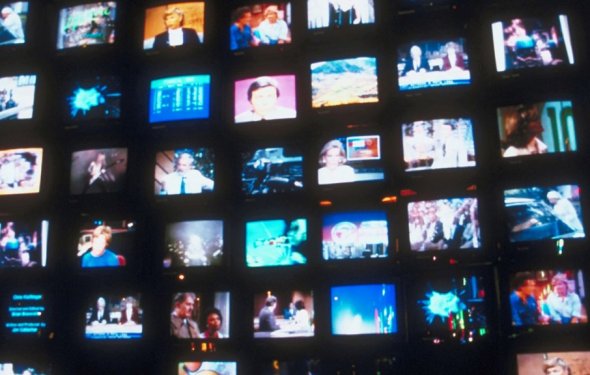
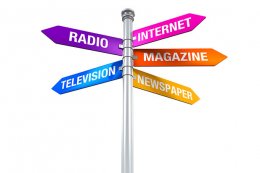 As consumers have actually shifted to brand-new news, advertising dollars haven't followed
As consumers have actually shifted to brand-new news, advertising dollars haven't followed
The goal of advertisers is not difficult: to achieve consumers. In order consumers shift from reading conventional periodicals to Internet content, advertisers generally follow. Over-long intervals, marketers should allocate their investing in the same manner that consumers allocate their time.
Since marketing spend should follow customer time changes, we've got a method to predict the ongoing future of marketing spend. Let’s begin by examining whether this method will have predicted marketing and advertising spend these days.
Also Browse: Audiences Nevertheless Like Conventional TV Content - But Online Streaming Is Gaining Fast (Guest Blog)
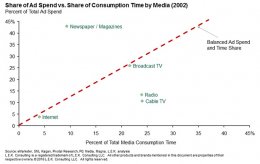 Let’s look back to 2002 in chart below. If there was perfect stability, you'd expect all news to-fall close to the purple parity line (the “balanced advertising invest and time share” dotted range regarding chart). But the 2002 data suggests an important disconnect between advertising share and time share. As you can plainly see, papers and publications commanded a disproportionately big share of the advertising bucks, while cable TV and radio at that time were much more considerable in terms of audience time.
Let’s look back to 2002 in chart below. If there was perfect stability, you'd expect all news to-fall close to the purple parity line (the “balanced advertising invest and time share” dotted range regarding chart). But the 2002 data suggests an important disconnect between advertising share and time share. As you can plainly see, papers and publications commanded a disproportionately big share of the advertising bucks, while cable TV and radio at that time were much more considerable in terms of audience time.
Between 2002 now, the prediction methods work: advertisement invest employs shifts in customer time.
Typically, advertising spend corrects. Most notably, the percentage of advertisement dollars spent on papers dropped to more or less 1 / 3 of just what it used to be. Remember that time invested reading periodicals consistently drop, and now we would expect advertisement spend to drop more toward the parity line.
As expected, advertising devote to radio dropped as consumers switched away from radio. As expected, advertising spend on Internet and mobile increased as customers switched toward online and cellular.
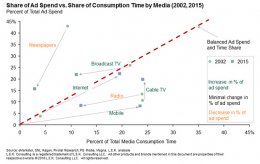 Also Read: the reason why the television business worries a Spread of Millennials' watching Habits (visitor weblog)
Also Read: the reason why the television business worries a Spread of Millennials' watching Habits (visitor weblog)
While consumer time spent on cable television stayed approximately the exact same, advertisers shifted spend to cable TV given that it was thus far out of stability in 2002. Advertisers were underspending on method in 2002, and advertisers corrected their spend toward the total amount line by 2015.
In conclusion, for nearly all media, ad spend employs consumer time, plus the dots usually monitor toward the 50/50 range when you look at the graphic (toward balanced advertisement spend and time share).
But one method resisted gravity. In 2002, broadcast television straddled the 50/50 range; in 2015, it's not even shut.
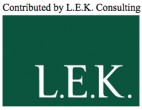 So what does this bucking of this trend mean money for hard times of broadcast TV? If advertisement dollars follow time share, we could see a 25 to 50 percent drop in broadcast television advertising revenues. But for now, advertisers tend to be staying with broadcast television. As hot as electronic marketing and advertising appears to be today, many marketers discover that it doesn’t offer the same get to and return on the investment that broadcast TV does.
So what does this bucking of this trend mean money for hard times of broadcast TV? If advertisement dollars follow time share, we could see a 25 to 50 percent drop in broadcast television advertising revenues. But for now, advertisers tend to be staying with broadcast television. As hot as electronic marketing and advertising appears to be today, many marketers discover that it doesn’t offer the same get to and return on the investment that broadcast TV does.
Also Browse: Why Netflix's Model May Offer the Salvation Cinemas Need (Guest Weblog)
Nevertheless, broadcast TV must be on notice. Also a 10 % drop in advertisement profits could complete a billion bucks. Our future posts will speak to what the television business is taking in order to avoid any downturns and take part in cellular development.
This is certainly component 3 in a set on television trends by Dan Schechter, Gil Moran and Michael Kaufman from L.E.K. Consulting’s Media & Entertainment consulting practice.
|
Megulla® MG-TVA100A 25 Miles Range Indoor HDTV Antenna with 16 feet coaxial cable, Supports up to 1080p, ATSC DVB Digital broadcast Amplified Antenna for HDTV STB, Black Speakers (Megulla)
|